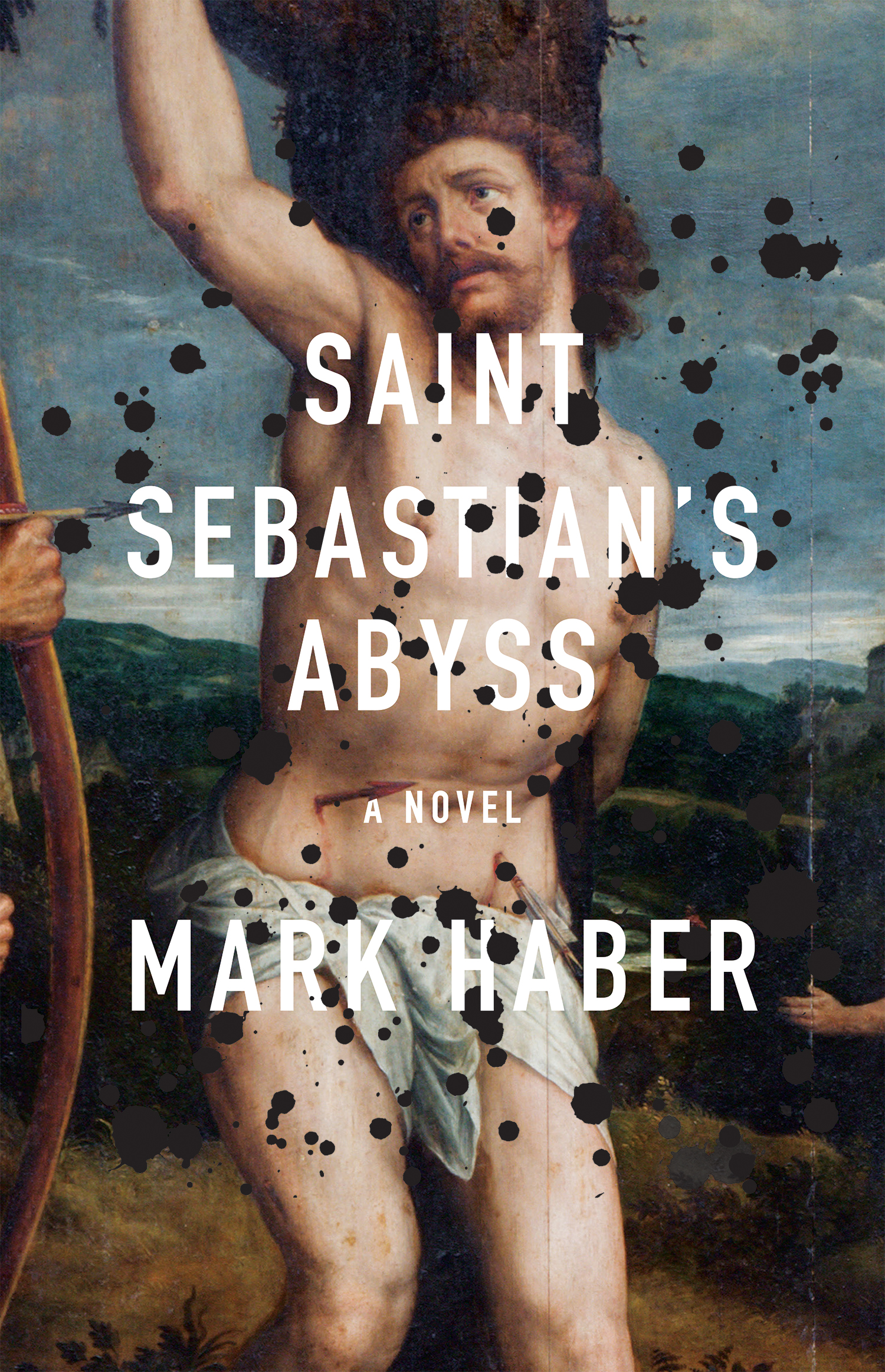Cover Reveal | Saint Sebastian’s Abyss by Mark Haber
Web Exclusives
Mark Haber, whose first book, Reinhardt’s Garden, was longlisted for the PEN/Hemingway Award, has a new novel coming out in the spring of 2022 with Coffee House Press—and SwR is excited to reveal the cover for that book, Saint Sebastian’s Abyss.
Our staff writer called Reinhardt’s Garden “utterly unique, owing to the abundant strangeness of the authorial voice,” and Haber’s story from our spring issue, “The Defense,” only confirms that impression. Coffee House describes Saint Sebastian’s Abyss as “a darkly comic meditation on art, obsession, and the enigmatic power of friendship.” So we thought we’d ask Mark about the new book, its influences, and the stunning cover design.
SwR: Give us a quick rundown of Saint Sebastian’s Abyss. What’s the story about? When and where is it set?

Mark Haber: It’s set in the contemporary world, and, although there are no exact timestamps, it’s the world you and I live in. The main narrative takes place on a flight from the US to Berlin. Our narrator is reflecting on a pivotal relationship in his life—the pivotal relationship, really—with his mentor and fellow art critic, an Austrian named Schmidt. During the flight, he recalls their success as critics, their tumultuous relationship. All of this is interspersed with the life of the Renaissance artist Count Hugo Beckenbauer who was their mutual obsession.
SwR: The title refers to a fictional painting by a Renaissance artist named Count Hugo Beckenbaur, also fictional. Where did the inspiration for Beckenbaur come from?
MH: I love art, painting especially. I have no formal education, but I found myself enjoying novels about art: Chloe Aridjis’s Asunder; Amina Cain’s Indelicacy; Optic Nerve by Maria Gainza. Old Masters by Thomas Bernhard is an obvious influence. So those books are all a sort of vague inspiration.
I don’t know the exact moment a story appears, but Beckenbauer was certainly inspired by a mix of different artists. I’ve always loved the trope of the eccentric loner/genius, a Van Gogh type, which can be fun to play around with. For me, Beckenbauer is an artist about whom not much is known, but what is known is colorful and strange.
The world of art is rich with possibility, from the gatekeepers and tastemakers to the idea of what deserves to be called “art”. Are we allowed to enjoy something that isn’t celebrated or lauded as high art? Can I love this, but also love that? What’s the line between the artist and the critic? These questions apply, of course, to literature and film and music too, and I love these questions.
SwR: How much of the story did you research and how much did you make up?
MH: For me, the research is incidental, if that makes sense. I write, and whatever I need as I’m going, I’ll research. The writing isn’t shaped by facts or history until it needs to be; I apply the facts as needed, mostly for consistency. I suppose another way to say this is that I make most of it up and research a little, in this case mostly Renaissance art and Germany in the 1500s. With research it’s easy to get sucked into rabbit holes and unwittingly overwhelm the reader with information, which I want to avoid.
SwR: The book’s cover features a real painting—Martyrdom of St. Sebastian—by Michael van Coxie. Can you talk about how you first came across the painting and the decision to include it on the cover?
MH: I can’t take credit. The book designer, Kyle Hunter, found the painting. I don’t normally like book covers that are too literal, but to be fair, there is no Saint Sebastian in the book, other than in the title of a painting, so I think it really works.
Coffee House is wonderful about partnering with their authors on their book designs, allowing the authors to give as much or as little input as they want. I’m incredibly lucky in that respect. I mentioned wanting a cover that evoked old Renaissance paintings, especially ones that display extreme feelings (ecstasy, suffering, religious mania). Since my characters tend to have extreme emotions, I wanted a painting showing this fervor. I also didn’t want to shy away from religious painting or symbolism since belief (or non-belief) is a major subject in the book.
SwR: Saint Sebastian’s Abyss will appeal to readers of _______.
MH: Lars Iyer and Thomas Bernhard. The small, fragmented books of Nathalie Léger. Novels with bite-sized chapters like Moods by Yoel Hoffman. I think anyone who enjoyed Reinhardt’s Garden will appreciate the novel; it’s a very different book but shares the same DNA.
More Web Exclusives

